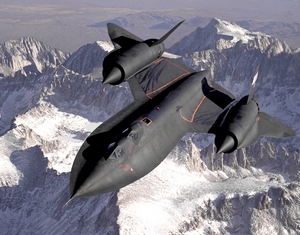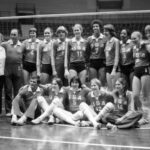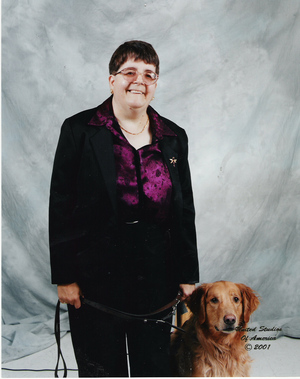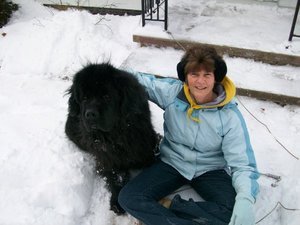THE MOTHER OF NECESSITY
1960 began literally with a “bang” over the skies of the Soviet Union. The bang was a horrible sound, an explosion which marked the detonation of a SAM 2 antiaircraft missile meeting its target. A few minutes later, the twisted wreckage of an American spy plane came tumbling down. In 1962, yet another was shot down over Cuba.
The American CIA had to face a hard fact: Its proud high-flying U-2 photo-reconnaissance aircraft, deployed barely a few years before, was already outdated.
What to do?
A SUPERSONIC WONDER
Two years later, in 1964, imagine an aircraft that…
– Cruised comfortably in excess of 2,000 mph and glowed red-hot!
– Was so expensive, that for every 1 hour the plane flew, it required upwards of 450 hours of repair!
– Had no armament – whose only defense against missiles was just to accelerate and get away!
If you imagined this, you envisioned Lockheed’s SR-71 “Blackbird” spy plane!
THE ULTIMATE OF “COOL” WAS ACTUALLY VERY HOT!
For a plane that flew in excess of three times the speed of sound, this baby was hot. I mean really honest-to-goodness smoking hot! Heat generated from 35 tons of engine thrust and friction from high-speed travel presented challenges the aircraft industry had never witnessed to date.
At speeds over 2,000 mph, the plane literally developed tons of air pressure, which threatened to destroy its sleek wings and fuselage. This air pressure and air friction produced enormous amounts of heat. The plane got so hot that it glowed red hot – at temperatures upwards of 1200?F or more!
Because it was difficult to build an aircraft and have it fly for sustained periods without melting into a useless metal blob, the Blackbird’s designers had to rig the plane to use its own fuel to cool the aircraft’s wings, fuselage, and tires while in flight! Fuel lines were routed in an intricate pattern along the aircraft’s leading edge surfaces where heat was at its greatest. The resultant flow of fuel under the aircraft’s skin shunted away just enough heat away to keep the plane’s skin from liquefying.
While using fuel seemed to be a viable solution to the heat problem, the fuel itself posed special problems to the guys at the drawing board.
AN ENGINEERING MARVEL – AND A DRIPPING MESS
After US President Lyndon Johnson’s accidental disclosure of the aircraft at a oppress conference in 1964, the formerly top secret Blackbird was later forced to be publically rolled onto the tarmac. The few reporters who later saw the plane may have observed it “bleeding” fuel all over the runway. The reporters asked themselves: Why build a plane that leaks fuel all over the place?
Again, heat was the culprit in all issues.
Any large complex machine has many moving parts. The Blackbird was no exception to this rule. The plane’s fuel cell walls were likewise comprised of separate and surprisingly independent moving parts. In essence, the aircraft’s fuel cell walls were intentionally built not to fit together properly while the plane was standing “cold” on the runway. With all these gaps and spaces between the fuel cell walls, it is no surprise the aircraft leaked fuel like a sieve.
How does a loosely built aircraft answer the heat problem then?
As we all know, everything expands with heat. After the Blackbird got up to its operational speed, heat naturally started mounting up. And as heat built up, the fuel cell walls and their supporting structures started to expand and move around. The designers took this expansion and movement into account, and thus designed the fuel tanks as separate pieces that fit together perfectly after expanding under heat. An amazing feat of engineering!
What about while the plane was sitting “cold” on the ground. How did these crazy engineers keep a liquid fuel from flowing completely out of fuel cells with gaping-wide seams? This was a problem to be answeredby the plane’s fuel. And indeed designing a fuel to meet the dripping problem was a tough task. After a lot of heartbreak and testing, the engineers arrived at a solution: make a semi-solid fuel.
In the end, the ‘Blackbird’s fuel was not a liquid, yet was not a solid propellant. The Blackbird’s special JP-7 jet fuel was designed with a gooey jelly-like consistency designed not to leak out of fuel cells – at least not much. While not 100% effective, the gelatinous property of the fuel lent enough consistency to ensure enough propellant would stay in the plane to get it up to proper speed and heat.
Otherwise the plane leaked fuel like a broken dam.
See the first photo accompanying this article – you’ll see fuel streaking backwards on the Blackbird’s sleek wings. A better picture is located among the “Resources” links located to the left.
THE ORIGINAL STEALTH PLANE
The Blackbird’s predecessor, the U-2 spy plane, traveled high and proud at subsonic speeds on graceful and fragile glider-like wings. It did its job well until came the day it fell victim to its own limited speed. Of the many questions asked by the downed U-2 spy planes, the SR-71 Blackbird answered with speed.
While speed in itself does not ensure stealth, speed was the primary defensive weapon the aircraft used to protect itself. However, recognizing speed as only one answer to the U-2’s shortcomings, SR-71 designers recognized advances in Soviet radar technology as an additional threat.
While classical aircraft design incorporated smooth aerodynamic design, these lines presented a broad and highly reflective target for attack radar systems. The Blackbird diverged from design convention as an aircraft with a low radar signature. It incorporated special “chines” on both sides – a continuous knife-edge surface starting at the leading edge of the aircraft’s nose and fuselage, which in turn blended seamlessly into the Blackbird’s massive swept wings.
Usually if any one design “improvement” introduced into the Blackbird’s sleek shape, this improvement brought about 10 problems elsewhere for spy plane’s engineers to wrestle with. For once, the chines actually did not present a problem. On the contrary, they helped. Not only did they reduce the SR-71’s radar signature, the chines also increased aerodynamic lift. This allowed the plane to fly more efficiently and carry more fuel.
A MAINTENENACE NIGHTMARE
As the holder of world air speed records during its operational lifetime, the SR-71 Blackbird was a real show grabber. But back at the hangar, the fix-it boys rolled their eyes each time a Blackbird returned home from a mission. Why? The aircraft was a maintenance nightmare.
For every 1 hour the plane flew, the Blackbird required upwards of 450 hours of repair! This said, when a typical mission lasted 8 hours at a time, this was followed by upwards of 3600 hours of maintenance and upkeep. Luckily only a few Blackbirds were needed at any one time. With around 30 aircraft available over any given time, this left ample time for repair crews to repair those planes grounded for maintenance.
BACK IN ITS NEST FOREVER
With the advent of spy satellite technology and the many eyebrows the SR-71 raised due to expensive operation, the last Blackbird flight took place in October of 1999. There are several Blackbirds on display in the USA, one of which is on display in Tucson, Arizona.
In Tucson, I once sneaked past the chain-link barrier meant to keep people like me away, and I actually touched the “Bird”. While I wasn’t electrocuted by some unseen theft-deterrent system (yeah, like you can steal a 30-ton aircraft!), I felt a chill – for I knew this old warrior had seen strange things and been places I would never witness – a nostalgia forever lost in the recesses of an unrecorded Cold War history.
Happy flying!
– John
References:
– US Air Force archives.
– Conversations with numerous military pilots and mechanics, many of whom I met while working with the Confederate Air Force, Arizona Wing B-17 Sentimental Journey restoration project in the 1980s.
– Special thanks to beloved teacher and friend, Lt. Eugene Corbett (Ret.), USN Air Forces Viet Nam, F-8 Crusader pilot, who patiently answered two years of incessant questions about air history and aircraft design.
ABOUT THE AUTHOR
John Melendez, former glider and single-engine land aircraft pilot, helped restore the B-17 “Sentimental Journey” stationed in the Confederate Air Force (now “Commemorative Air Force”) wing in Mesa, Arizona. Much later John got to photograph and see Chinese MiG fighter planes while working in Shanghai for A/S Det Oetasiatiske Kompagni (EAC), a Danish trade company with offices worldwide. John served as Regional Manager for a EAC’s cargo transport JV established with Beijing City Planning Commission.
Recently John has worked among the ranks of the world’s largest software providers and IT education companies. Former Managing Editor for Computer Associates’ Windows Tips & Secrets, a monthly technology newsletter with a circulation of 35,000 subscribers, John now works as a technical writer and industrial consultant for Cibola International. His knowledge specialties include: business with China; biodiesel centrifuges; and overseas procurement of industrial goods.
An alumnus of the University of Arizona with a Bachelor of Arts Degree in Chinese Studies, John speaks, reads and writes Mandarin Chinese, German, and English. John telecommutes from Phoenix, Indianapolis and mainland China.
Read John’s other articles at: http://www.associatedcontent.com/johnmelendez
Subscribe by RSS Feed: http://www.associatedcontent.com/rss/user_76423.xml




